Research on the Effect of Tip Surface Coatings on High-Speed Spindles’ Noise
Abstract
:1. Introduction
2. Experiment Methods and Equipment
2.1. Samples and Parameters
2.2. Coatings on the Rotor Tip Surfaces of Spindles
2.3. Coatings Characteristics Tests
2.4. Experiment Setup and Data Processing
2.5. Vibration and Noise Experiment Procedure
3. Results and Discussion
3.1. Coating Inspection and Lubrication Calculation
3.2. Vibration Pre-Experiment Results and Analysis
3.3. The Sound Pressure Levels of Rotating Spindles
3.4. Comparison of Spindle Sound Pressure Level at the Same Speed
3.5. Overall Comparison of Sound Pressure Levels of Each Spindle
4. Conclusions
Supplementary Materials
Author Contributions
Funding
Institutional Review Board Statement
Informed Consent Statement
Data Availability Statement
Conflicts of Interest
References
- Golmohammadi, R.; Monazzam, M.R.; Hashemi, Z.; Fard, S.M.B. Pattern Evaluation of Noise Propagation at Various Units of a Textile Industry. Casp. J. Appl. Sci. Res. 2014, 3, 1–8. [Google Scholar]
- Jiao, X. The Impact of the Bearing on the Spindle Noise on the Spinning Frame of Cotton Process. J. Text. Res. 2014, 41, 24–26. [Google Scholar]
- Mo, S.; Feng, Z.; Dang, H.; Zou, Z.; Wang, D.; Zhu, H. Vibration damping mechanism and vibration characteristics of spindle tubes. J. Text. Res. 2020, 41, 148–153. [Google Scholar]
- Li, X.; He, J.; Zhao, Y. Vibration Characteristics of PMSM Grinding Motorized Spindle. J. Phys. 2020, 1622, 012013. [Google Scholar] [CrossRef]
- Subbarao, R.; Dey, R. Selection of Lathe Spindle Material Based on Static and Dynamic Analyses Using Finite Element Method. Mater. Today: Proc. 2020, 22, 1652–1663. [Google Scholar] [CrossRef]
- Zhang, J.; Lu, J.; Yuan, X.; Ding, P. Research on Vibration Noise of Small DC Motors based on EMI Technology. Noise Vib. Control 2019, 39, 134–140. [Google Scholar]
- Fu, Q.; Wang, L. Brief Discussion on Energy Saving of High-speed Spindles. Text. Accessories 2019, 46, 22–24. [Google Scholar]
- Wu, Y.; Zhang, J.; Zhang, L.; Wang, J. Experimental Study on Influence Factors of Friction Noises of Rotating Sliding Friction Pairs. China Mech. Eng. 2020, 31, 2814–2821. [Google Scholar]
- Lin, C.; Zou, M.; Sima, C.; Liu, S.; Jiang, L. Friction-induced vibration and noise of marine stern tube bearings considering perturbations of the stochastic rough surface. Tribol. Int. 2019, 131, 661–671. [Google Scholar] [CrossRef]
- Nam, J.; Baek, J.; Do, H.; Kang, J. Experimental investigation of friction noise on lubricated contact. J. Mech. Sci. Technol. 2017, 31, 5751–5760. [Google Scholar] [CrossRef]
- Soohyun, N.; Takehiro, H.; Hongjin, J.; Eiji, S. Proposal of novel spindle speed variation profile with constant acceleration rate for improvement of chatter stability. Precis. Eng. 2021, 68, 218–234. [Google Scholar]
- Shuntaro, Y.; Takamichi, I.; Hirohiko, M.; Jun, F.; Yasuhiro, K. Self-acting optimal design of spindle speed variation for regenerative chatter suppression based on novel analysis of internal process energy behavior. Int. J. Mach. Tools Manuf. 2020, 159, 103639. [Google Scholar]
- Li, N.; Dong, C.; Wu, Y. Reinforcement of Frictional Vibration Noise Reduction Properties of a Polymer Material by PTFE Particles. Materials 2022, 15, 1365. [Google Scholar] [CrossRef]
- Xu, J.; Kang, J.; Yue, W.; Fu, Z.; Zhu, L.; She, D. High-temperature tribological property of Fe-based amorphous alloy coating. J. Non-Cryst. Solids 2021, 573, 121136. [Google Scholar] [CrossRef]
- Fan, X.; Li, W.; Cui, S.; Li, J. Effect of Soft/Hard Friction Pairs Material on the Tribological Behavior of Ni3Al-based Coating in Wide Temperature Range. Surf. Technol. 2021, 50, 152–159. [Google Scholar]
- Feng, L.; Wang, Z.; Shen, W. Effects of complex graphite-like carbon coating on gear vibration noise. Results Phys. 2019, 12, 1495–1499. [Google Scholar] [CrossRef]
- Vencl, A. Optimization of the deposition parameters of thick atmospheric plasma spray coatings. J. Balk. Tribol. Assoc. 2012, 18, 405–414. [Google Scholar]
- Pawlowski, L. The Science and Engineering of Thermal Spray Coatings, 2nd ed.; John Wiley & Sons: Chichester, UK, 2008. [Google Scholar]
- Wang, J.; Li, W.; Yu, H.; Zhang, G.; Wang, W.; Wang, D.; Wang, R. Influence of damping elastic tube structure and spindle bar on the noise of high speed spindle. Shanghai Text. Sci. Technol. 2021, 49, 1–4. [Google Scholar]
- Shtansky, D.V.; Kiryukhantsev-Korneev, P.V.; Sheveyko, A.N.; Mavrin, B.N.; Rojas, C.; Fernandez, A.; Levashov, E.A. Comparative investigation of TiAlC(N), TiCrAlC(N), and CrAlC(N) coatings deposited by sputtering of МАХ-phase Ti 2−х Cr х AlC targets. Surf. Coat. Technol. 2009, 203, 3595–3609. [Google Scholar] [CrossRef]
- Hong, D.; Niu, Y.; Li, H.; Zhong, X.; Tu, W.; Zheng, X.; Sun, J. Comparative Study on Wear Behavior of Plasma-Sprayed TiC Coating Sliding Against Different Counterparts. J. Therm. Spray Technol. 2020, 29, 1082–1092. [Google Scholar] [CrossRef]
- Li, H.; Sun, P.; Cheng, D. Structure and Properties of DLC Films Deposited on Mg Alloy at Different C2H2 Flows of Magnetron Sputtering Process. Coatings 2021, 11, 815. [Google Scholar] [CrossRef]
- Yu, H.; Li, Z.; Cao, X.; Wang, G.; Yue, J.; Zhang, S. Design of multi⁃function spindle detection system. Shanghai Text. Sci. Technol. 2019, 47, 14–17. [Google Scholar]
- Li, Y.; Miao, Q.; Liang, W.; Lin, H.; Huang, C.; Zhao, Z.; Sun, Z. Effect of Al/Cr Composite Coating on Hot Corrosion Resistance of Ti2AlNb Alloy. Surf. Technol. 2020, 49, 192–199. [Google Scholar]

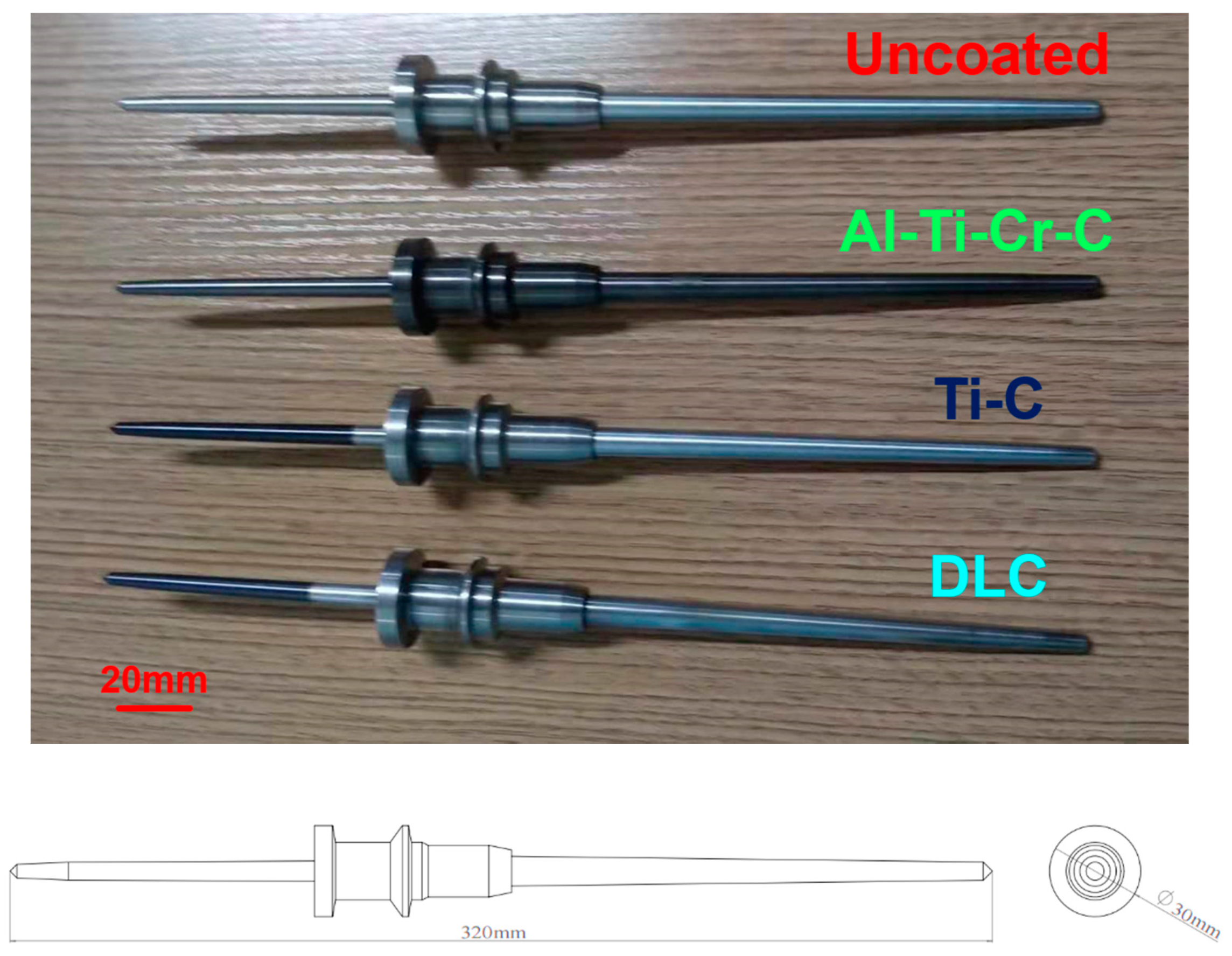

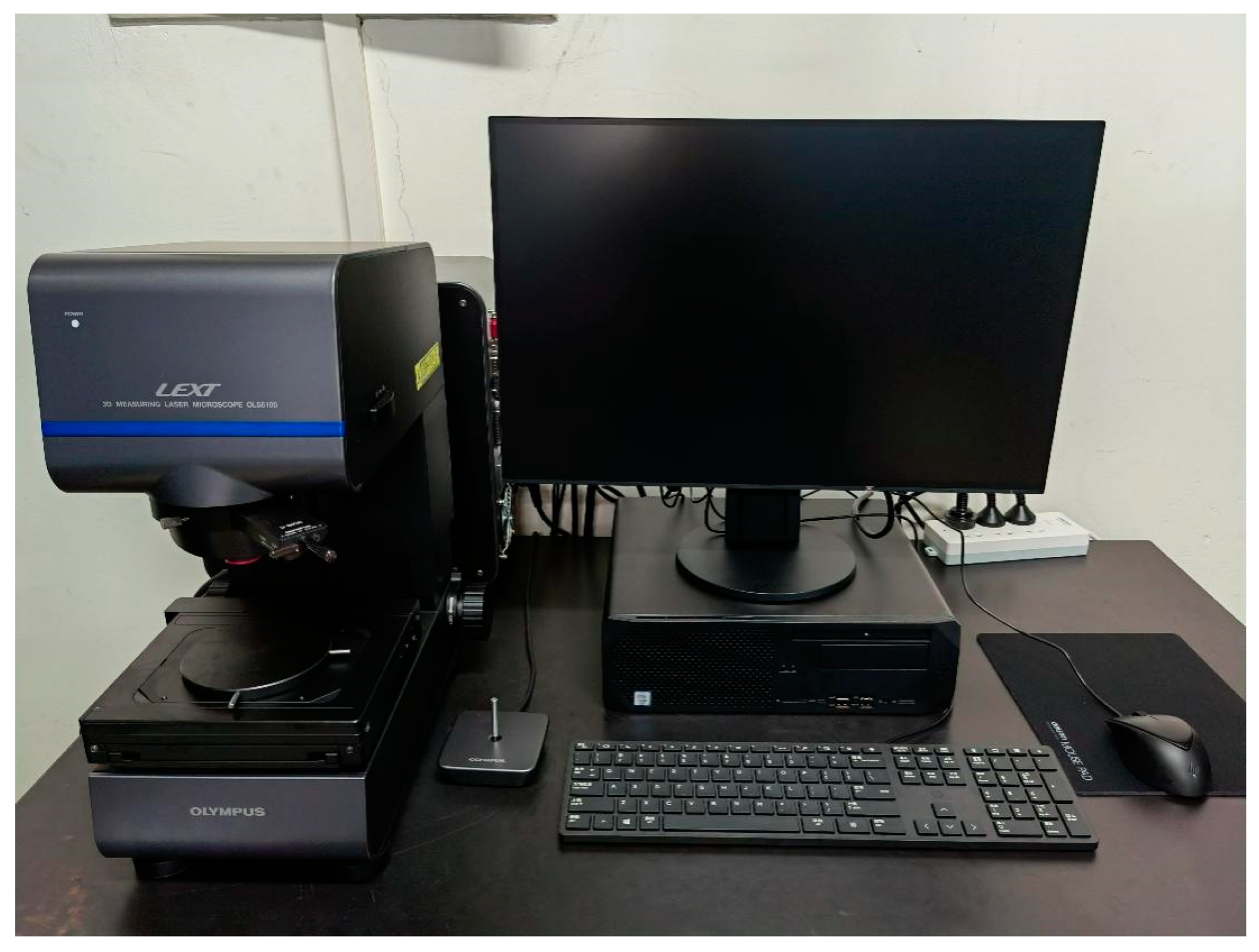

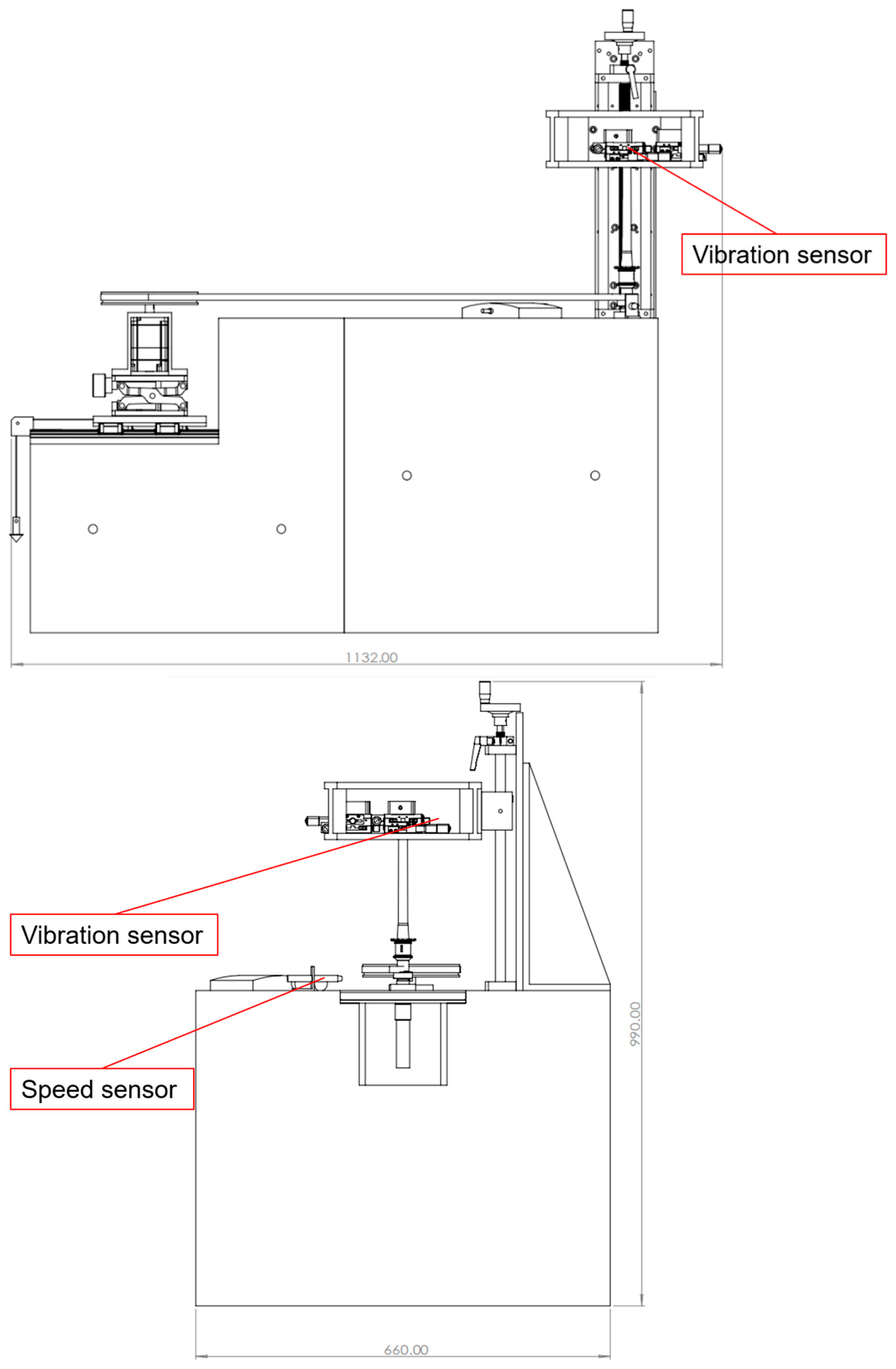
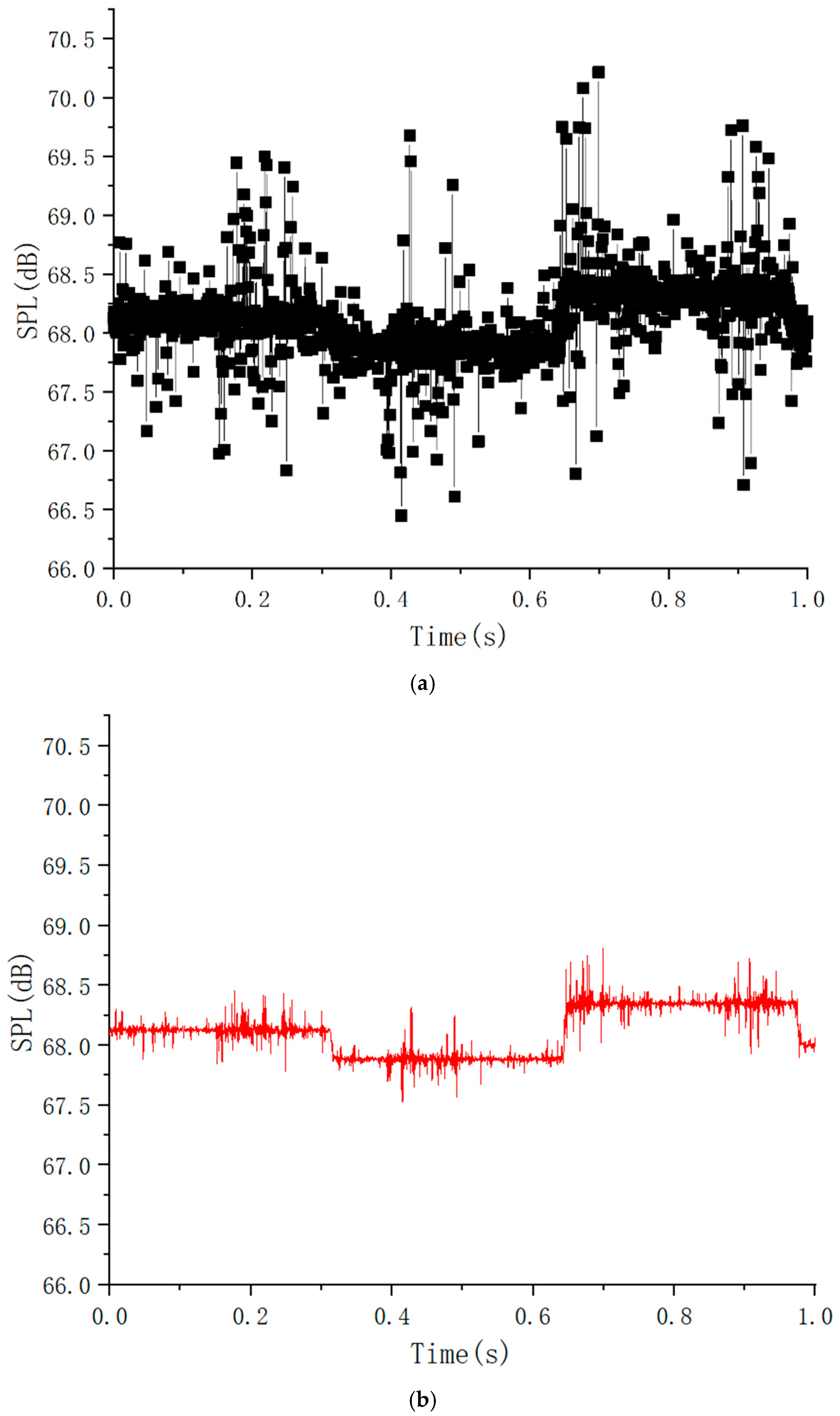
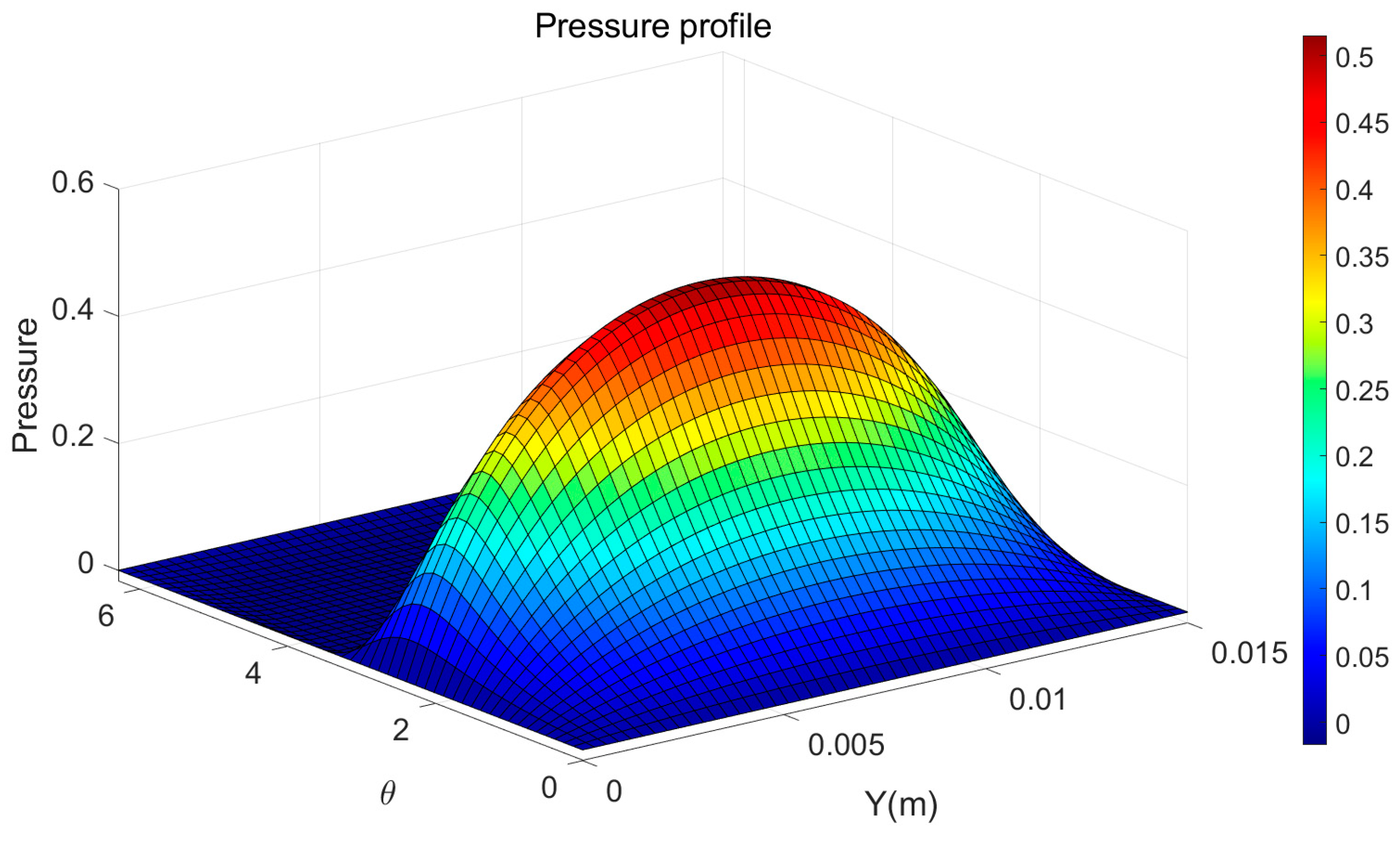



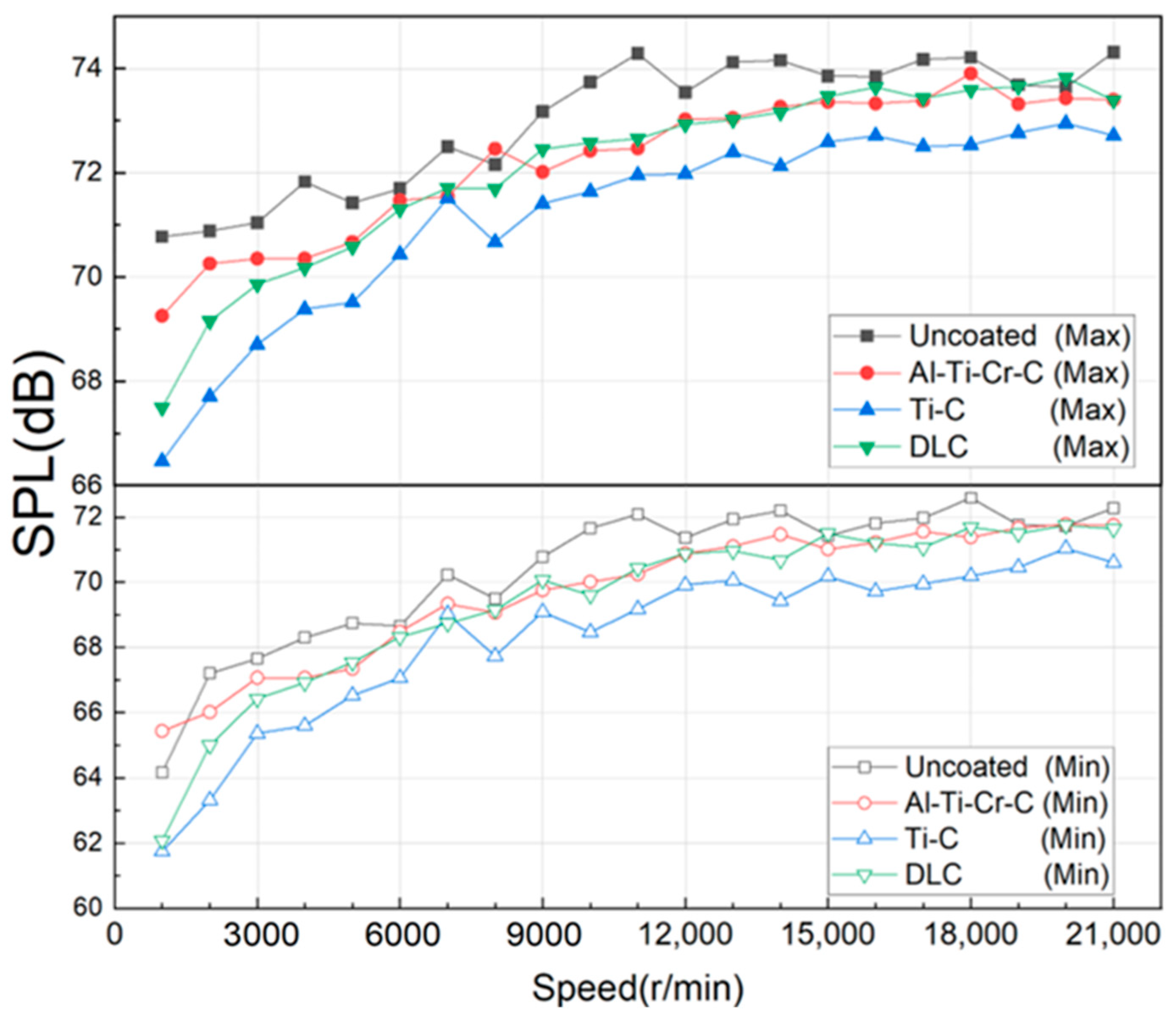
| Instrument Type | Model | Manufacturer Name | Country for Instruments | Range | Precision |
|---|---|---|---|---|---|
| motor | SGM7A-04A | YASKAWA | Kitakyushu, Japan | - | - |
| noise sensor | RS-ZS-V10-2 | Shandong Renke Control Technology | Shandong, China | 25~130 dB | 0.1 dB |
| Speed sensor | ROS-P | Monarch Instrument | Amherst, NH, USA | 1–250,000 r/min | ±0.0015% |
| Vibration sensor | OptoNCDT 2200-2 | Micro-Epsilon | Ortenburg, Bayern, Germany | 0–2 mm | 0.1 μm |
| Multifunction I/O Device | USB-6361 | National Instruments | Austin, TX, USA | - | - |
| Surface Coating Type | Main Chemical Composition and Proportions | Single Side Thickness (μm) | Surface Roughness (Ra) (μm) | Hardness (HV) | Coefficient of Friction (−) |
|---|---|---|---|---|---|
| Coating Al-Ti-Cr-C | Al(20%), Ti(50%), Cr(20%), C(10%) | 3 ± 0.1 | 0.376 ± 0.002 | 3500 ± 20 | 0.3~0.35 |
| Coating Ti-C | Ti(80%), C(20%) | 3 ± 0.1 | 0.377 ± 0.002 | 2800 ± 18 | 0.1~0.2 |
| Coating DLC | sp2(80%), sp3(20%) | 2.5 ± 0.1 | 0.377 ± 0.002 | 2600 ± 16 | 0.06~0.1 |
| Speed (r/min) | Uncoated | Al-Ti-Cr-C | Ti-C | DLC |
|---|---|---|---|---|
| Average Amplitude (mm) | Average Amplitude (mm) | Average Amplitude (mm) | Average Amplitude (mm) | |
| 1000 | 0.009 | 0.008 | 0.007 | 0.007 |
| 3000 | 0.011 | 0.012 | 0.008 | 0.009 |
| 5000 | 0.009 | 0.008 | 0.007 | 0.009 |
| 7000 | 0.008 | 0.007 | 0.005 | 0.006 |
| 9000 | 0.011 | 0.007 | 0.008 | 0.005 |
| 11,000 | 0.012 | 0.012 | 0.009 | 0.006 |
| 13,000 | 0.010 | 0.011 | 0.009 | 0.007 |
| 15,000 | 0.008 | 0.010 | 0.008 | 0.008 |
| 17,000 | 0.009 | 0.009 | 0.008 | 0.009 |
| 19,000 | 0.007 | 0.006 | 0.006 | 0.008 |
Publisher’s Note: MDPI stays neutral with regard to jurisdictional claims in published maps and institutional affiliations. |
© 2022 by the authors. Licensee MDPI, Basel, Switzerland. This article is an open access article distributed under the terms and conditions of the Creative Commons Attribution (CC BY) license (https://creativecommons.org/licenses/by/4.0/).
Share and Cite
Yu, H.; Li, W.; Wang, J.; Zhang, S.; Cao, X.; Wang, R.; Zhang, G.; Yin, X. Research on the Effect of Tip Surface Coatings on High-Speed Spindles’ Noise. Coatings 2022, 12, 783. https://doi.org/10.3390/coatings12060783
Yu H, Li W, Wang J, Zhang S, Cao X, Wang R, Zhang G, Yin X. Research on the Effect of Tip Surface Coatings on High-Speed Spindles’ Noise. Coatings. 2022; 12(6):783. https://doi.org/10.3390/coatings12060783
Chicago/Turabian StyleYu, Hechun, Wenchao Li, Jin Wang, Suxiang Zhang, Xiucheng Cao, Renzong Wang, Guoqing Zhang, and Xiaolong Yin. 2022. "Research on the Effect of Tip Surface Coatings on High-Speed Spindles’ Noise" Coatings 12, no. 6: 783. https://doi.org/10.3390/coatings12060783





